Roses have been cherished for centuries for their timeless beauty, intoxicating fragrance, and the elegance they add to any garden. Whether you’re a seasoned gardener or just starting out, growing roses can be a rewarding experience.
In this article, we’ll dive into the many benefits of cultivating these stunning blooms, share some of my personal favorite varieties, and provide you with essential tips for their care and maintenance.
Benefits of Growing Roses
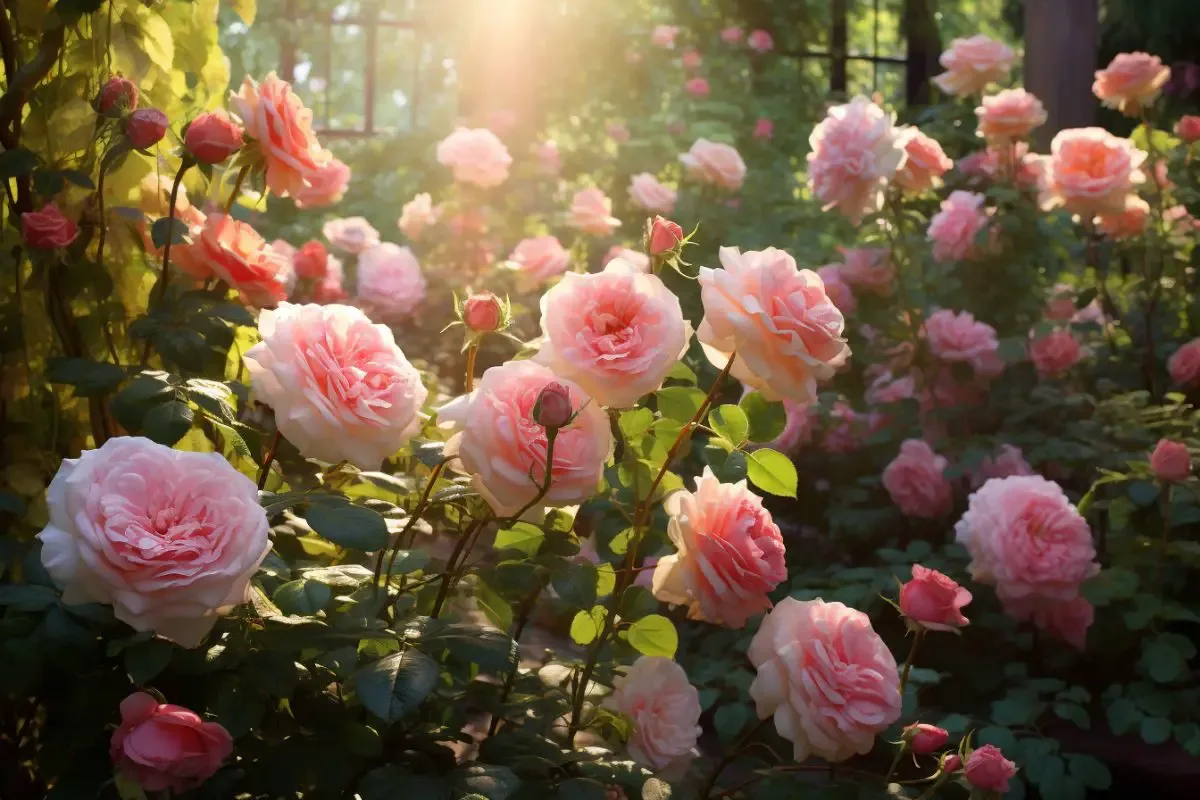
1. Aesthetic Appeal
One of the most apparent benefits of growing roses is the sheer beauty they bring to any space. With their lush foliage and vibrant blooms, roses can transform an ordinary garden into a breathtaking sanctuary. They come in a myriad of colors and shapes, allowing you to create a stunning visual display that reflects your personal style.
2. Fragrance
Roses are renowned for their delightful fragrance, which can vary significantly between different varieties. Some roses have a sweet, fruity scent, while others boast a rich, spicy aroma. By planting a variety of roses, you can create a garden that not only looks beautiful but also smells heavenly.
3. Emotional Wellbeing
Gardening itself is a therapeutic activity, and the act of caring for roses can bring a sense of calm and satisfaction. Roses have a unique way of capturing our attention and encouraging us to slow down and appreciate the moment.
Plus, the sense of accomplishment that comes from nurturing these blooms and seeing them flourish is truly rewarding.
My Favorite Rose Varieties
As a gardening enthusiast and blogger, I’ve had the joy of cultivating numerous rose varieties in my garden. Through these experiences, I’ve come to appreciate the unique characteristics and charms of each type.
Let me share with you some of my all-time favorite rose varieties that have not only thrived in my garden but also brought immense joy and beauty to my space.
1. ‘David Austin Roses’
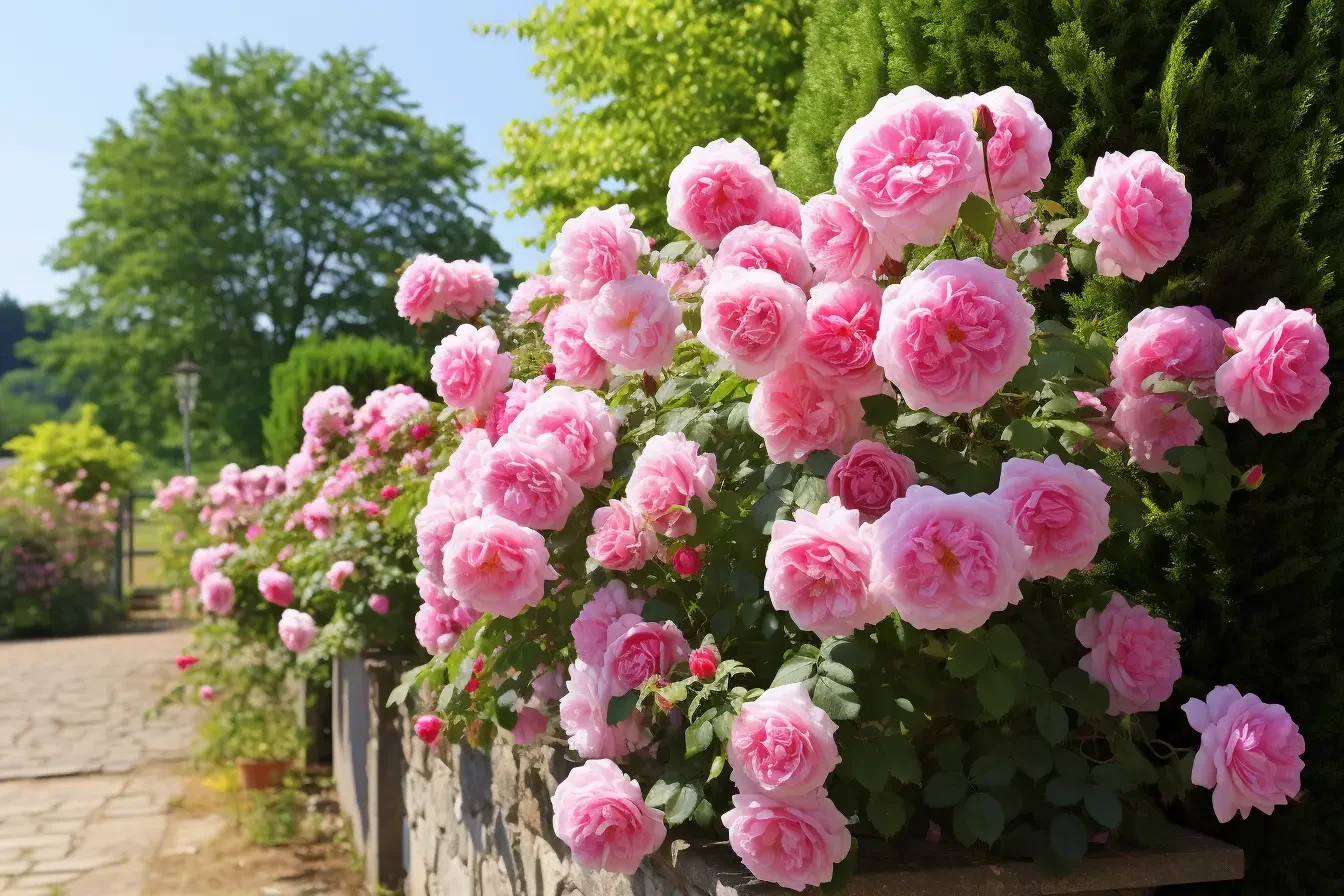
These English roses are among my all-time favorites, known for their stunning blooms and exquisite fragrance. They have the charm of old garden roses but with the repeat flowering ability and wide color range of modern varieties. ‘Graham Thomas’ and ‘Gertrude Jekyll’ are two particular varieties that I find utterly irresistible.
2. ‘Knock Out’ Roses
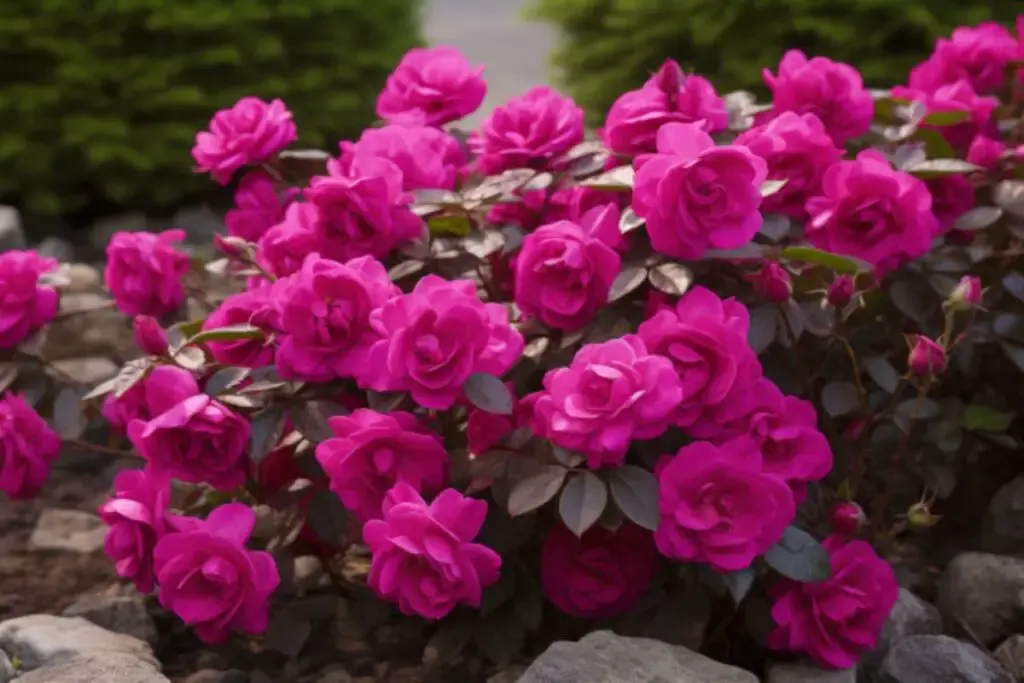
For those looking for a low-maintenance option, ‘Knock Out’ roses are a fantastic choice. These hardy shrubs are disease-resistant, bloom prolifically throughout the growing season, and require minimal care. Their vibrant, non-stop flowers make them a popular choice for both novice and experienced gardeners.
3. ‘Iceberg’ Roses
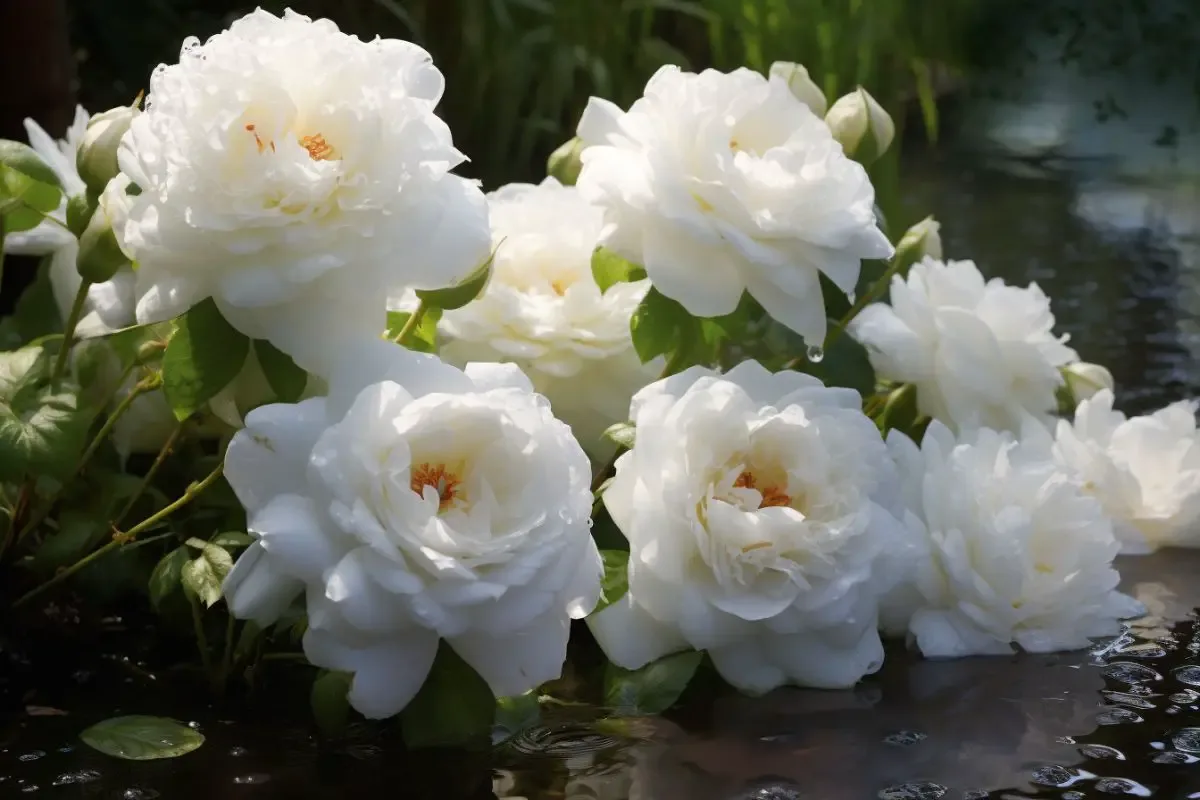
This variety is renowned for its prolific white blooms and dark green foliage. ‘Iceberg’ roses are incredibly versatile and can be grown as shrubs, climbers, or even in containers. They have a light, sweet fragrance and are known for their resilience and ability to thrive in a variety of conditions.
Rose Care
Growing roses can be incredibly rewarding, but like any plant, they require specific care to thrive. Below, I’ve outlined essential aspects of rose care to ensure your blooms are the envy of the neighborhood.
Planting
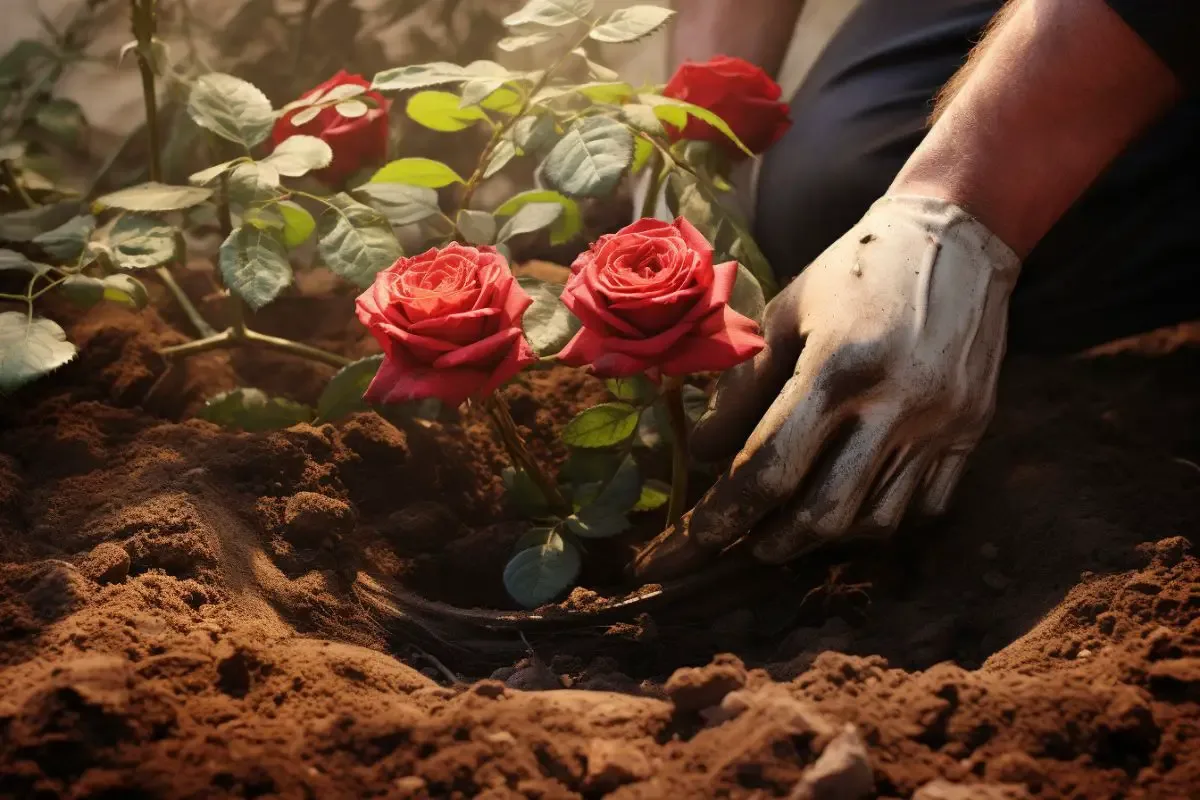
Choosing the right spot and planting your roses correctly sets the stage for healthy growth. Roses prefer a location that receives at least 6-8 hours of sunlight daily. When planting, ensure the hole is deep and wide enough to accommodate the roots, allowing them space to spread out.
Mix in some well-rotted organic matter to enrich the soil. Be mindful of the graft union (the swollen area on the stem where the rose is budded or grafted), ensuring it’s just above the soil level. Water thoroughly after planting to settle the soil.
Light
Roses are sun-lovers and need ample light to produce abundant blooms. A minimum of 6-8 hours of direct sunlight is ideal. Morning sun is particularly beneficial as it helps to dry the leaves, reducing the risk of disease.
If your roses are not getting enough light, they may become leggy, produce fewer blooms, and be more susceptible to pests and diseases.
Soil
Roses prefer well-draining soil rich in organic matter. A pH level between 6.0 and 6.5 is ideal. If your soil is heavy clay or sandy, amend it with organic compost to improve its structure and fertility. Proper soil preparation ensures your roses have the nutrients they need to grow and bloom.
Water
Consistent watering is crucial, especially for newly planted roses and during dry spells. Aim to keep the soil evenly moist but not soggy. Watering at the base of the plant rather than overhead helps prevent leaf diseases.
A layer of mulch can help retain soil moisture and suppress weeds. Be mindful not to overwater, as this can lead to root rot.
Temperature and Humidity
Roses thrive in temperate conditions. They generally prefer temperatures between 60-75°F during the day and 55-60°F at night. While roses can tolerate hotter temperatures, prolonged heat can stress the plants and lead to fewer blooms.
High humidity can also create an environment conducive to diseases like blackspots and powdery mildew. Ensure good air circulation around your roses to help mitigate these issues.
Fertilizer
Roses are heavy feeders and benefit from regular fertilization. Use a balanced, slow-release fertilizer formulated for roses, applying it in spring as new growth emerges and again in midsummer to support continued blooming.
Be careful not to over-fertilize, as this can lead to lush foliage at the expense of blooms. Also, avoid fertilizing late in the season, as this can stimulate new growth that’s vulnerable to winter damage.
Pruning
Pruning is an essential part of rose care, fostering healthier plants and more prolific blooms. The best time to prune is late winter or early spring, just as the buds start to swell. Start by removing any dead or damaged wood, as well as any weak or twiggy growth.
Cut back old wood by about a third to encourage new growth. Make your cuts at a 45-degree angle, about 1/4 inch above an outward-facing bud. If you have climbing or rambling roses, prune them to shape and control their size, removing any dead or weak growth.
Don’t be afraid to give your roses a good prune; they are quite resilient. Regular pruning keeps the plant healthy, improves air circulation, and encourages vibrant blooms.
Propagating
Propagating roses can be a rewarding challenge, and there are several methods to do so, including cuttings, layering, and grafting. One of the most common and straightforward methods is propagating from cuttings.
To do this, take a 10-12 inch cutting from a healthy, blooming plant, making the cut just below a leaf node. Remove the leaves from the lower half of the cutting, dip the cut end in the rooting hormone, and plant it in a pot filled with a mix of perlite and peat moss.
Keep the soil moist and cover the cutting with a plastic bag to create a humid environment. In 4-8 weeks, the cutting should develop roots, and you can transplant it to a larger pot or directly into your garden.
How to Grow Roses From Seed
Growing roses from seed is a lengthy process but can be highly rewarding. Collect seeds from rose hips after they have ripened and turned red or orange. Clean the seeds and stratify them by placing them in a sealed bag with moistened vermiculite or sand, then refrigerate for 10-12 weeks.
After stratification, sow the seeds in a tray filled with a well-draining soil mix, barely covering them with soil. Keep the soil moist and provide ample light. Germination can take several weeks to several months, so patience is key. Once seedlings have developed true leaves, transplant them to individual pots to grow on before planting them out in the garden.
Growing in Pots
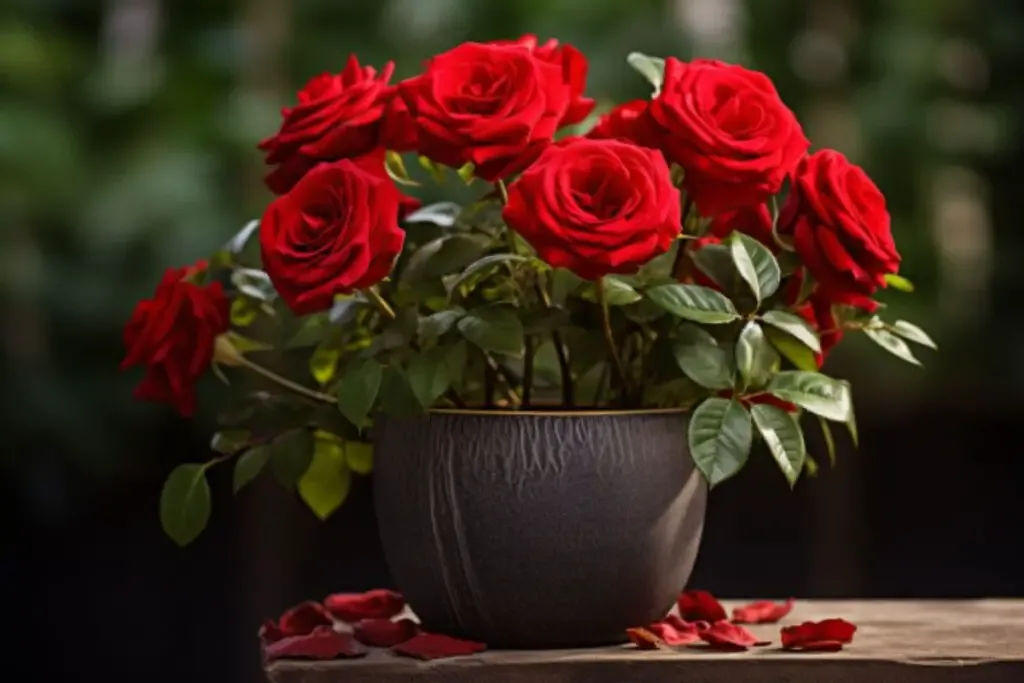
Roses can thrive in pots, making them a great option for those with limited space or poor soil. Choose a large pot with good drainage holes and fill it with a high-quality potting mix. Miniature and shrub varieties are well-suited to container gardening.
Ensure your potted roses receive ample sunlight and water them regularly, keeping the soil consistently moist. Fertilize every 4-6 weeks during the growing season, and provide support for climbing or rambling varieties. Remember that roses in pots may need more frequent watering and feeding than those planted in the ground.
Overwintering
Ensuring your roses survive the winter starts with proper fall care. As temperatures begin to drop, reduce watering to help harden off the plants. It’s also important to stop fertilizing by late summer to prevent new growth that could be damaged by cold.
Once the ground has frozen, you can add a layer of mulch around the base of the plant to help insulate the roots. For particularly tender varieties, or in regions with severe winters, consider using rose cones or burlap to provide additional protection.
Prune any dead or diseased wood, but save major pruning for the spring, as pruning stimulates growth. If you have climbing roses, gently remove them from their supports and lay them flat on the ground, securing them in place. This helps prevent wind damage and can make it easier to cover them with a protective layer of straw or mulch.
Transplanting
There may come a time when you need to move your rose to a new location. The best time to transplant a rose is in early spring or late fall when the plant is dormant. Start by pruning the rose back by about one-third to reduce stress on the plant. Dig around the plant, taking as much of the root ball as possible.
Prepare the new hole in advance, making it wide and deep enough to accommodate the roots. When transplanting, try to maintain the same soil level on the stem as was in the previous location.
Fill in the hole with soil, and water well, and add a layer of mulch around the base of the plant. Keep the soil consistently moist for the first few weeks until the plant has had a chance to establish itself in its new location.
Common Pests & Diseases
Roses, while stunning, can be susceptible to a few pests and diseases. As a gardener who has faced these challenges head-on, I’m here to share some insights and tips on how to keep your roses healthy and thriving.
- Aphids: These tiny insects cluster on new growth and under leaves, sapping the plant’s strength. A strong blast of water or insecticidal soap usually does the trick to get rid of them.
- Japanese Beetles: These beetles can defoliate a rose bush quickly. Hand-picking them off or using traps can help control their population.
- Spider Mites: These tiny pests cause leaves to turn speckled and dry. Increasing humidity and using miticides can help control an infestation.
- Black Spot: This fungal disease causes black spots on leaves and can lead to defoliation. Ensure good air circulation, avoid wetting leaves when watering, and use fungicides as needed.
- Powdery Mildew: It appears as a white powdery substance on leaves and stems. Prune affected parts and use a fungicide to control its spread.
- Rust: This disease causes orange or yellow spots on the undersides of leaves. Remove affected leaves and use a fungicide to treat your plants.
By providing proper care and keeping an eye out for signs of pests and diseases, you can ensure your roses remain healthy and vibrant. Remember, a healthy rose is less susceptible to problems, so give them the attention they need and enjoy the beauty they bring to your garden. Happy gardening!

